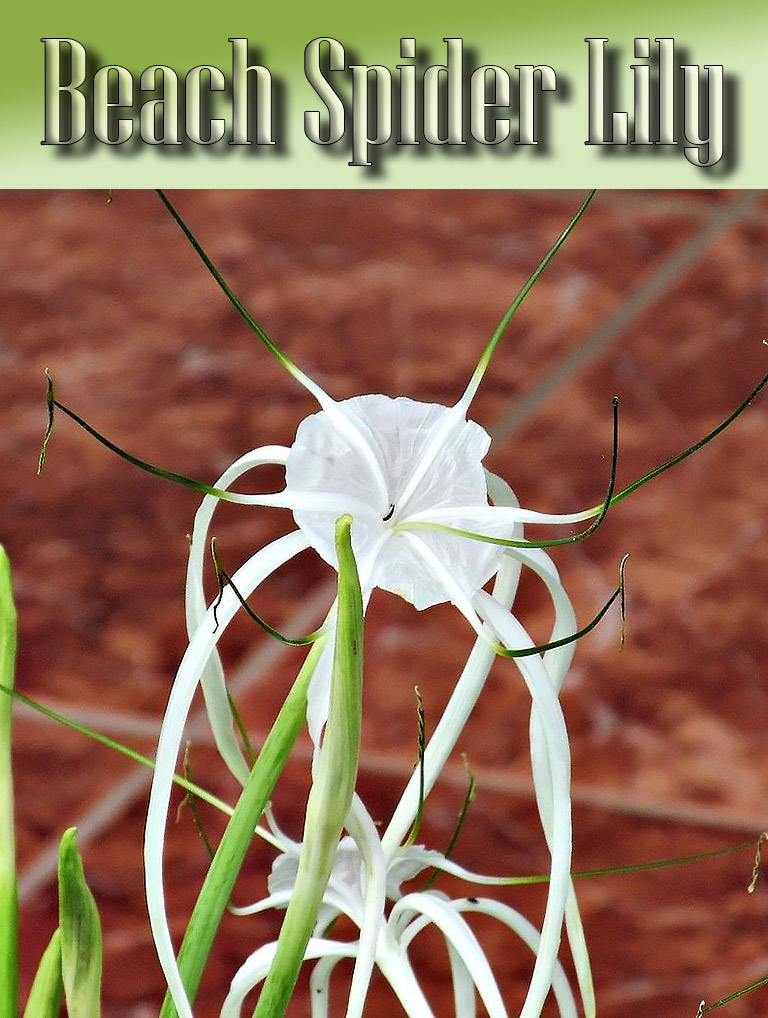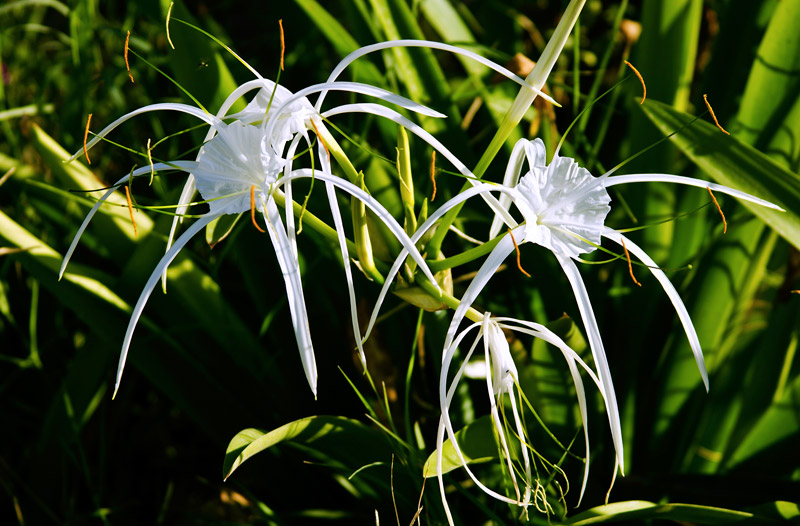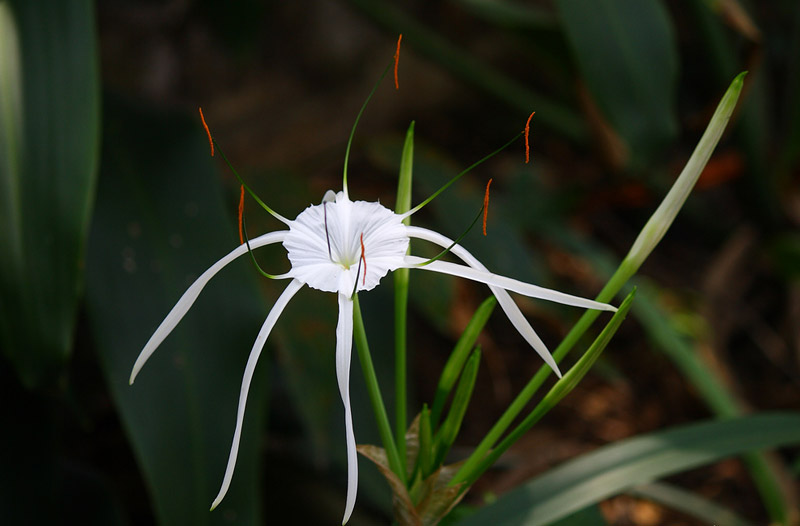
This amazing bulb based plant “beach spider lily” enjoys environments that are downright aquatic and easy to maintain. These one of a kind flowers will look like spiders crawling across your flower’s shelving unit all summer long, and provide your home with a sweet vanilla scent.
The Beach Spider Lily demands a large growing pot, with even new plants requiring a half gallon pot or larger for their first year of life. This bulb-based plant will let you know when it needs a larger pot by breaking the one that it is currently in.
Pleasing this plant species requires plenty of water and sunlight, as well as a unique soil blend. When cared for correctly, the stems of these plants can grow to almost 2 feet (60 cm) long, and the flower will easily add another foot (30cm) of length when it is fully bloomed. The flower produces a strong vanilla scent.
How it looks: From the bulb, individual shoots grow up from the soil. Each bulb will produce multiple shoots, each with strap-shaped leaves that arch up to 2 feet (60 cm) in length.
White flowers emerge from the ends of these leaves in the middle of summer. The flowers possess a 5-7 inch (14 to 17 cm) long tube, which turns white near the final few inches. A tubular flower opens into a normal-looking white flower. From the edges of the flower, several narrow tepals arch down for several inches around the plant, giving it the spider-like quality.

Flowering: Encouraging Beach Spider Lily to bloom for the following year requires a resting period in late August or early September. Once the blooms have fallen off for the season, reduce the offered water and stop fertilizing the plant for at least three weeks. Reduce the amount of light your plant receives during this time as well.
Beach Spider Lily Plant Care
Temperature: Beach Spider Lily is capable of withstanding temperatures that drop into the 40ºF (4°C) range, and as high as 90ºF (32ºC). They must be protected against frosts by all means, or the plant will die back to the bulb stage.
Light: This plant requires partial shade to full sun. Make certain it can get enough light from the pot location.
Watering: Beach Spider Lily demands wet conditions all year long. The bulbs can be started in nothing except water, but need to be moved to soil once they begin to sprout. Soil should be kept moist, but never soggy. Do not allow standing water in the saucer underneath.
Soil: These plants prefer a standard potting soil mixed with bark or pumice at a 1:1 ratio. The pH of the soil chosen needs to be between 5.0 and 7.5 for the continued health of the plant.
Fertilizer: You may fertilize your plant once every two weeks with a diluted balanced fertilizer. Seaweed based fertilizers have been reported to produce the best results.
Re-Potting: Every two years, this plant requires re-potting and an infusion of new soil. Move the plant to a size larger pot, and mix in new soil to fill the gaps. This should be done when the plant is not flowering.
Air Humidity: Beach Spider Lily is happy with normal air humidity, as long as its soil is properly moist. If the soil has been allowed to dry out, the leaves and flowers may be misted with a spray bottle to combat dehydration effects.
Propagation: Beach Spider Lily is propagated either by seed or by dividing rhizomes. Maturity from seed takes several years. It is easier to break off a piece of the bulb and propagate from it.

Common Problems
- Beach Spider Lily species experiences very few problems in an average year. One of the most common situations is a lack of flowering or producing small flowers.
- If your plant refuses to flower, give it a month long break from fertilizing. Reduce watering to keep the soil damp, and provide it with a darker place than usual.
- If your Beach Spider Lily still does not want to flower, check that its soil is wet enough, and that it is receiving enough sunlight.
- If you take your plant outside at any point in time, you must check it daily. Snails and slugs enjoy eating the leaves of this plant, and must be removed whenever they are present.





Leave a Reply